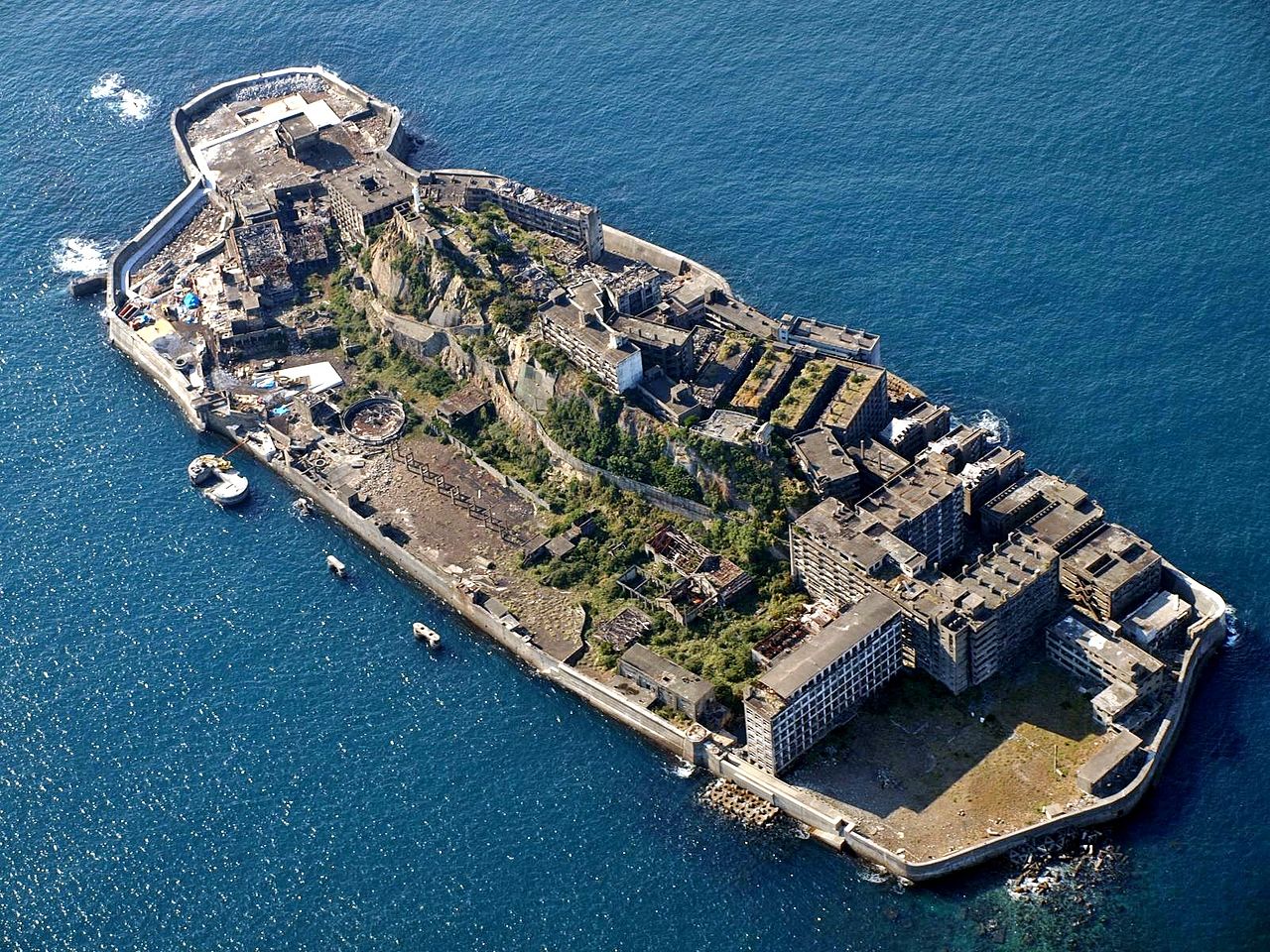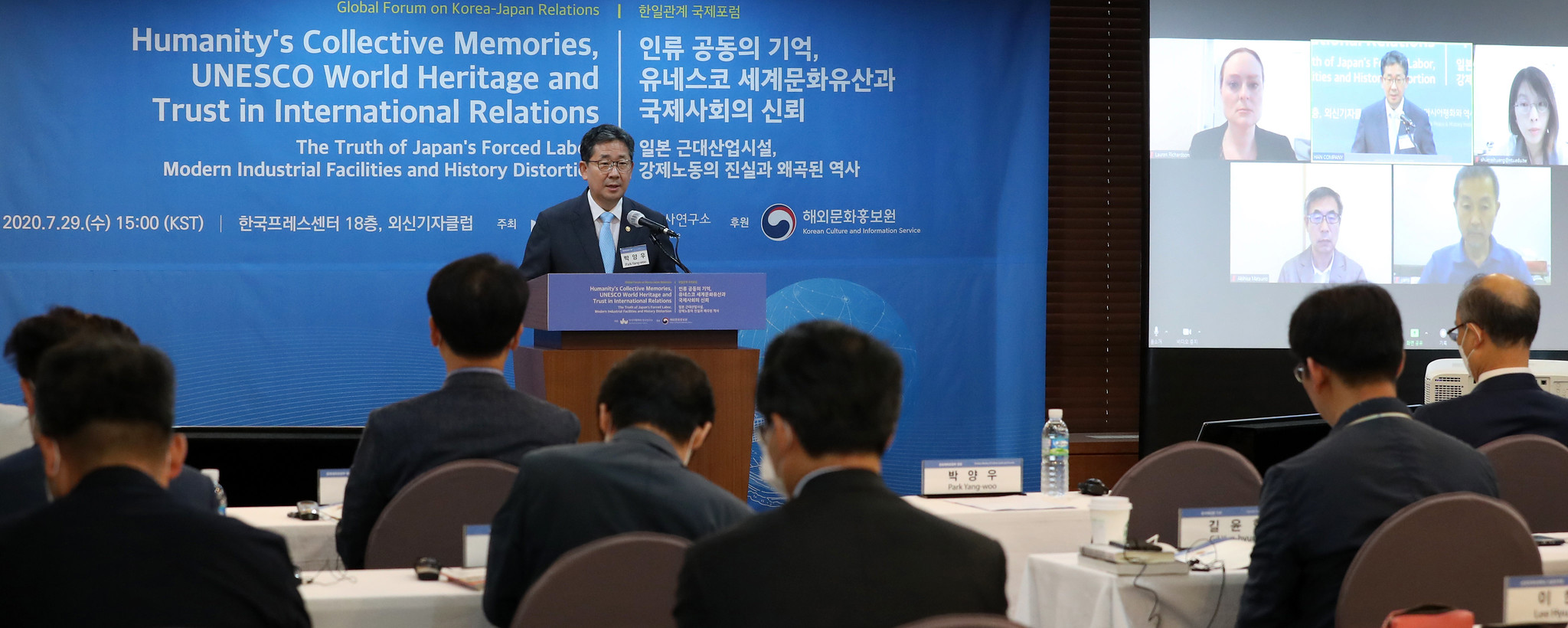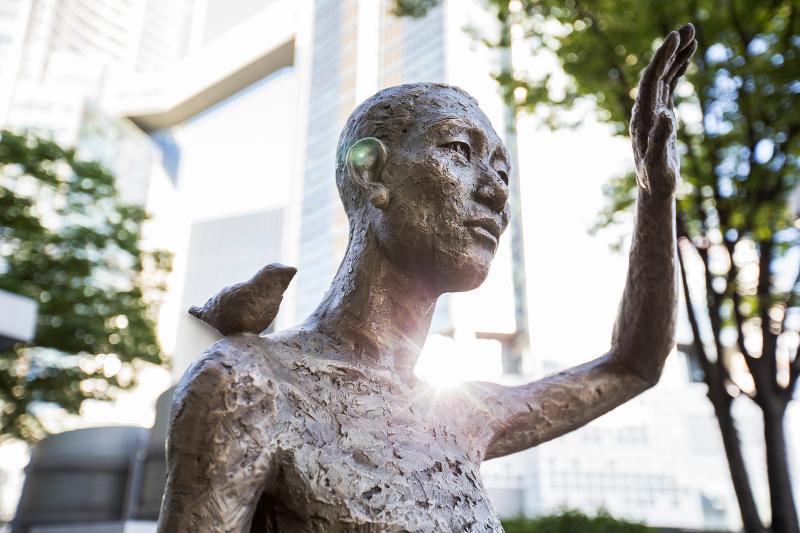- 한국어
- English
- 日本語
- 中文
- العربية
- Español
- Français
- Deutsch
- Pусский
- Tiếng Việt
- Indonesian
By Honorary Reporter Dayviana Diaz from Cuba
Photo = Wikimedia Commons, Korea.net DB
To mark the 76th anniversary of national liberation, the Korean Culture and Information Service (KOCIS) made the video "UNESCO World Heritage Represents All of Humankind" to remind the world that Japan has failed to honor the victims of its colonial rule of the Korean Peninsula and the importance of remembering forced workers on Hashima (Battleship) Island. The video is available on Korea.net's YouTube channel and has received more than 76,000 views.

Hashima (Battleship) Island off the coast of Nagasaki, Japan, is where one of the darkest chapters in Japanese rule of the Korean Peninsula occurred. (Wikimedia Commons)
The video begins by showing how UNESCO expressed deep regret over Japan failing to keep its pledge to inform the world of its use of forced labor during the Meiji Industrial Revolution. Twenty-three industrial sites from the Meiji era (1868-1912) in 2015 was designated UNESCO World Heritage, and the Industrial Heritage Information Centre in Tokyo shows how these places "contributed" to such heritage. Yet the center says nothing about the victims forced to work on the island from Korea and other Asian countries.

The Global Forum on Korea-Japan Relations in July 2020 at Seoul Press Center discussed the truth about Japan's use of forced workers at Meiji industrial facilities and Tokyo's distortion of history. (Korea.net DB)

A statue at Yongsan Station Square in Seoul of a victim forced to work by Japan has raised awareness of war crimes during Japan's rule of the Korean Peninsula. (Korea.net DB)
Why must the world have a proper and accurate understanding of UNESCO World Heritage sites like Hashima Island? First, the video's title indicates that such heritage represents all of humankind, thus people have the right to know accurate history. Deliberately omitting mistakes to show a better version of oneself is wrong. So why are relics of Japan's industrial development that cost the blood, sweat and tears of hundreds of Korean and other victims are displayed as "heritage?"
Korea and more recently UNESCO have urged Japan to keep its pledge to acknowledge its wartime atrocities. The ball is now in Tokyo's court to make good on its promise.
enny0611@korea.kr
*This article is written by a Korea.net Honorary Reporter. Our group of Honorary Reporters are from all around the world, and they share with Korea.net their love and passion for all things Korean.